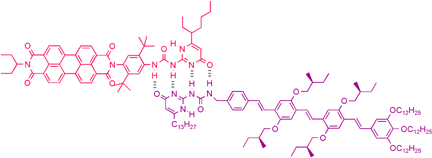Singlet-energy transfer in quadruple hydrogen-bonded oligo(p-phenylenevinylene)perylene-diimide dyads
Abstract
The photophysical properties of a supramolecular donor–acceptor dyad consisting of an oligo(p-phenylenevinylene) unit and a perylene-diimide unit are described. The dyad is created by functionalising the two


 Please wait while we load your content...
Please wait while we load your content...